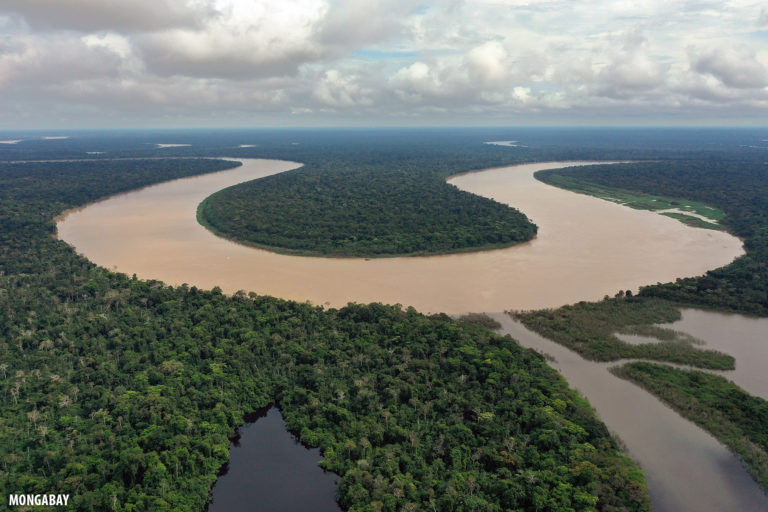- Despite the economic impacts of the COVID-19 pandemic, deforestation in the Brazilian Amazon continues to rise, reaching the highest level recorded since April 2008, according to official data from Brazil’s national space research institute INPE.
- Data from INPE’s deforestation monitoring system DETER shows that forest clearing in the Brazilian Amazon amounted to 327 square kilometers in March, pushing the total area of deforestation detected by the system during the past year to 9,152 sq km, the highest level for a 12-month period since May 2008 when 9,190 sq km were lost.
- The new figures come amid rising fears that illegal loggers and speculators are using the COVID-19 crisis as an opportunity to invade indigenous lands and protected areas in Brazil.
- However the rise in Amazon deforestation predates the emergence of COVID-19. Deforestation has been trending upward in the Brazilian Amazon since 2012, but increased sharply once President Jair Bolsonaro took office in January 2019.
Despite the COVID-19 pandemic slowing global commerce and causing the prices of some commodities to plummet, deforestation in the Brazilian Amazon continues to rise, reaching the highest level recorded since April 2008, according to official data from Brazil’s national space research institute INPE.
Data from INPE’s DETER deforestation monitoring system shows that forest clearing in the Brazilian Amazon amounted to 327 square kilometers in March, pushing the total area of deforestation detected by the system during the past year to 9,152 sq km, the highest level for a 12-month period since May 2008 when 9,190 sq km were lost.
INPE puts deforestation year to date at 796 sq km, 55 percent higher than a year ago, and 5,200 sq km since the “deforestation year”, which starts August 1, began. Brazil tracks deforestation on a July 31-August 1 basis to coincide with the peak of the dry season when cloud cover over the Amazon is typically at its low, making it easier for satellites to assess changes in tree cover.
The new figures come amid rising fears that illegal loggers and speculators are using the COVID-19 crisis — which has prompted Brazil’s environmental protection agency IBAMA to scale back law enforcement — as an opportunity to invade indigenous lands and protected areas in Brazil. A group of Karipuna recently filed a complaint to authorities over forest clearing within their indigenous reserve in Rondônia, while press reports indicate that illegal gold miners are moving into Yanomani territory in northern Brazil. A Yanomani teen reportedly died on Thursday from coronavirus.
However the rise in Amazon deforestation predates the emergence of COVID-19. Deforestation has been trending upward in the Brazilian Amazon since 2012, but increased sharply once President Jair Bolsonaro took office in January 2019. Bolsonaro has cut environmental law enforcement budgets, granted amnesty to illegal deforesters, forced scientists and experts out of key government roles, and called for reductions in the extent of protected areas and indigenous territories.
Scientists have warned that Bolsonaro’s policies could accelerate the Amazon rainforest toward a tipping point where it shifts toward a drier, savanna-like landscape. Such a transition could destabilize the system that drives regional rainfall, increasing the risk of regional drought.




